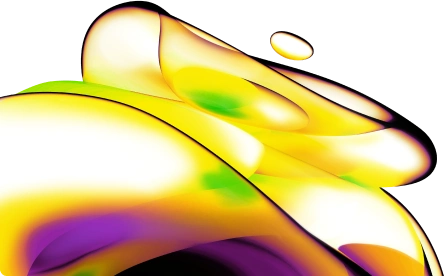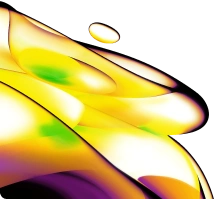
Expanded Newborn Screening and Gene Sequencing Panel with ABCD1 and CYP21A2
This panel analyzes genes that have been associated with conditions manifesting in the newborn and pediatric periods of life, including the ABCD1 and CYP21A2 genes.
| Test Code | D3004 |
|---|---|
| Test Summary |
This panel analyzes genes that have been associated with conditions manifesting in the newborn and pediatric periods of life, including the ABCD1 and CYP21A2 genes. |
| Turn Around Time | 3 - 5 weeks |
| Acceptable Sample Types | DNA, Isolated , Dried Blood Spots , Saliva , Whole Blood (EDTA) |
| Acceptable Billing Types | Institutional Billing , Self (patient) Payment |
| NY Approved | No |
| CPT Codes** | 81479(x1), 81443(x1) |
**The CPT codes listed are in accordance with Current Procedural Terminology, a publication of the American Medical Association, and are provided for informational purposes only. CPT coding is the sole responsibility of the billing party.
This testing service has not been cleared or approved by the U.S. Food and Drug Administration. Testing services may not be licensed in accordance with the laws in all countries. The availability of specific test offerings is dependent upon laboratory location.
Test information
Test description
Indications for testing
- Genetically heterogeneous disease caused by likely pathogenic/pathogenic findings in multiple genes
- Condition suggestive of a genetic disorder with a long differential diagnosis list
- Unclear or atypical presentation of a genetic disorder
Genes
Test methods and limitations
Sequencing is performed on genomic DNA using an Agilent targeted sequence capture method to enrich for the exome. Direct sequencing of the amplified captured regions was performed using 2X150bp reads on Illumina next generation sequencing (NGS) systems. A base is considered to have sufficient coverage at 20X and an exon is considered fully covered if all coding bases plus three nucleotides of flanking sequence on either side are covered at 20X or more. A list of these regions, if any, is available upon request. Alignment to the human reference genome (GRCh37) is performed and annotated variants are identified in the targeted region. Variants reviewed have a minimum coverage of 8X and an alternate allele frequency of 20% or higher. Indel and single nucleotide variants (SNVs) may be confirmed by Sanger sequence analysis before reporting at director discretion. This assay cannot detect variants in regions of the exome that are not covered, such as deep intronic, promoter and enhancer regions, areas containing large numbers of tandem repeats, and variants in mitochondrial DNA. Copy number variation (CNV) analysis detects deletions and duplications; in some instances, due to the size of the exons, sequence complexity, or other factors, not all CNVs may be analyzed or may be difficult to detect. When reported, copy number variant size is approximate. Actual breakpoint locations may lie outside of the targeted regions. CNV analysis will not detect tandem repeats, balanced alterations (reciprocal translocations, Robertsonian translocations, inversions, and balanced insertions), methylation abnormalities, triploidy, and genomic imbalances in segmentally duplicated regions. This assay is not designed to detect mosaicism; possible cases of mosaicism may be investigated at the discretion of the laboratory director. Primary data analysis is performed using Illumina bcl2fastq converter v2.19. Secondary analysis is performed using Illumina DRAGEN Bio-IT Platform v.3.10.8. Tertiary data analysis is performed using SnpEff v5.0 and Revvity Omics’ internal ODIN v.1.01 software. CNV and absence of heterozygosity are assessed using BioDiscovery’s NxClinical v6.1 software.
ABCD1 gene specific long-range PCR was performed to capture the genomic sequences for the real ABCD1 gene from this individual’s genomic DNA to prevent pseudogene from being co-amplified. Next-generation sequencing (NGS) was performed on an Illumina system with 100 base pair paired-end reads. Variants for the ABCD1 gene are evaluated using the Adrenoleukodystrophy Database (www.x-ald.nl) in addition to other mutation databases such as the Human Gene Mutation Database (HGMD) and published literature. This analysis cannot detect variants in regions not analyzed such as promoters, deep intronic regions. Copy number variation (CNV) analysis was assessed using MLPA or by manual reviewing of NGS reads using IGV viewer. This analysis cannot determine the location or orientation of a duplication. This assay is not designed to detect mosaicism; possible cases of mosaicism may be investigated at the discretion of the laboratory director.
CYP21A2 long-range PCR was performed to capture the genomic sequences for the real CYP21A2 gene from this individual’s genomic DNA to prevent the pseudogene from being co-amplified. Next-generation sequencing (NGS) was performed on an Illumina system with 100 base pair paired-end reads. A base is considered to have sufficient coverage at 20X and an exon is considered fully covered if all coding bases plus three nucleotides of flanking sequence on either side are covered at 20X or more. Low coverage regions, if any, are limited to ~1% or less of the nucleotides in the test unless a pathogenic variant explaining the phenotype is discovered. A list of these regions is available upon request. Alignment to the human reference genome (hg19) is performed and annotated variants are identified in the targeted region. Variants are called at a minimum coverage of 8X and an alternate allele frequency of 20% or higher. Indels and Single nucleotide variants (SNVs) are confirmed by Sanger sequence analysis before reporting at the director's discretion. This assay cannot detect variants in regions of the exome that are not covered, such as deep intronic, promoter, and enhancer regions or long repetitive regions. Copy number variation (CNV) analysis was assessed using MLPA. This analysis cannot determine the location or orientation of a duplication. This assay is not designed to detect mosaicism; possible cases of mosaicism may be investigated at the discretion of the laboratory director.
Detailed sample requirements
Saliva
| Collection Container(s) |
Oragene™ Saliva Collection Kit or ORAcollect-Dx kit |
|---|---|
| Collection |
Collect saliva on an Oragene™ Saliva Collection Kit ORAcollect-Dx kit according to the manufacturer's instructions. |
| Sample Condition |
Store at ambient temperature. Do not refrigerate or freeze. |
| Shipping |
Ship overnight at ambient temperature. |
| SPECIAL SAMPLE INSTRUCTIONS |
Please contact Revvity Omics to request the saliva collection kit for patients who cannot provide a blood sample as whole blood is the preferred sample. Testing using Saliva swabs is currently not available for customers in India. Contact the Revvity Omics laboratory for more information. |
Dried Blood Spots
| Collection Container(s) |
Dried blood spot card |
|---|---|
| Collection |
Follow kit instructions. Briefly, allow blood to saturate the card until indicated areas are filled and blood has soaked through the card. Air dry the card at ambient temperature for at least 3 hours.
|
| Sample Condition |
Follow the instructions provided with the collection set. Store the dried blood at ambient temperature for up to two days. If the specimen cannot be sent as soon as it is dry, the filter paper should be placed in a sealable plastic bag and stored in a refrigerator (≤ 8°C) or preferably in a freezer. |
| Shipping |
Follow kit instructions. Double bag and ship overnight at ambient temperature. |
DNA, Isolated
| Collection |
Required DNA Quantity by Test Type*:
|
|---|---|
| Sample Condition |
* Required DNA Quality: High molecular weight DNA (>12kb). A260/A280 reading should be ≥ 1.8. A260/230 a ratio range of 1.8 to 2.2. Contact the laboratory for specific amounts if total ng cannot be met. |
| Shipping |
Ship overnight at ambient temperature. |
| SPECIAL SAMPLE INSTRUCTIONS |
|
Whole Blood (EDTA) (Preferred Sample)
| Collection Container(s) |
EDTA (purple top) |
|---|---|
| Collection |
Infants (< 2-years): 2 to 3 mL; Children (>2-years): 3 to 5 mL; Older children and adults: Minimum 5mL. The blood tube should be inverted several times immediately after blood collection to prevent coagulation. |
| Sample Condition |
Store at ambient temperature. Do not refrigerate or freeze. |
| Shipping |
Ship overnight at ambient temperature ensuring receipt within 5-days of collection. |
| SPECIAL SAMPLE INSTRUCTIONS |
Clotted or hemolyzed samples are not accepted. |
Resources


How To Order
Choose Your Test
Select the correct test for your patient, and download and fill out the Clinical Genomics test requisition form.
Collect Sample
Obtain a sample for testing from the patient using one of the provided Revvity Omics test packs.
Send Samples
Send samples and all required forms back to Revvity for processing using pre-paid shipping label.
How can we help you?
We are here to answer your questions.






























